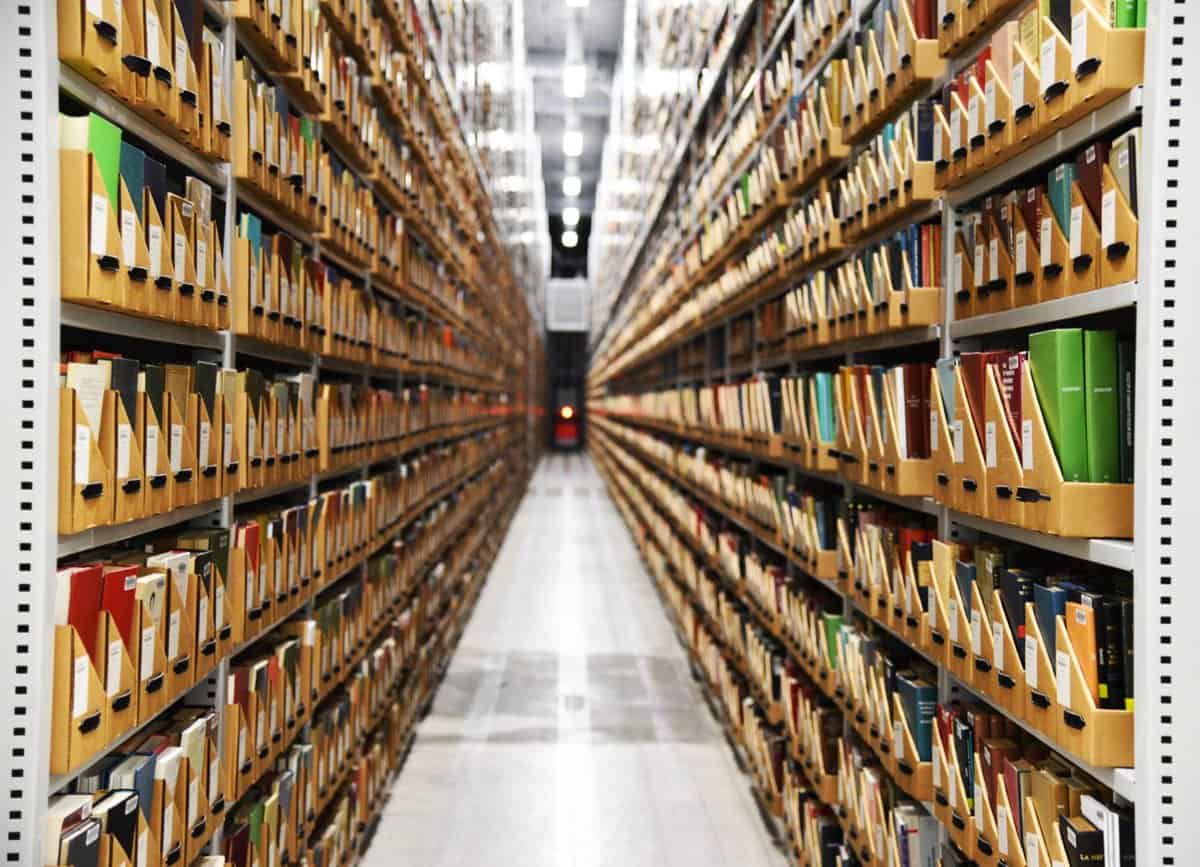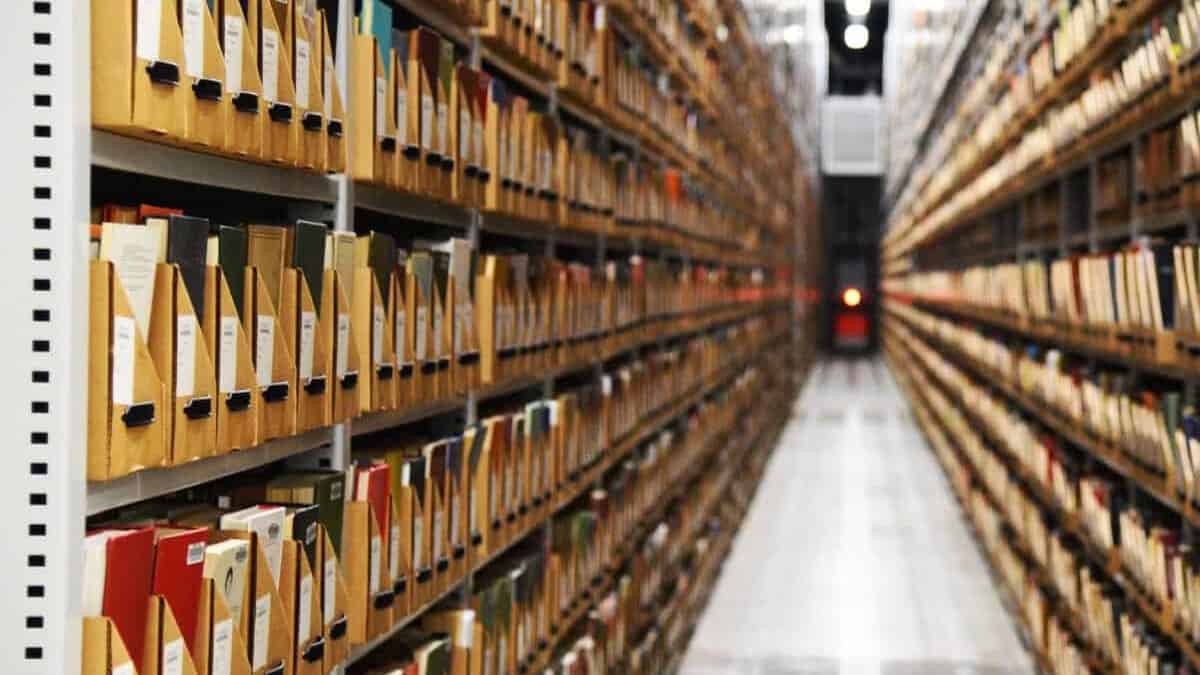This remarkable facility boasts towering shelves, millions of volumes, and a satellite—and that’s just the beginning.
The University of Iowa Libraries Annex sits on the outskirts of Iowa City, tucked between warehouses and against train tracks. Inside the 60,000-square-foot facility, long aisles extend into darkness—but when the motion-activated lights click on, they illuminate 22-foot shelves stacked floor-to-ceiling with trays of materials. The effect is kaleidoscopic, books of every color neatly in place.
This impressive space currently stores about 1.8 million volumes—not including thousands of Special Collections and Archives materials—but has capacity for up to 4.8 million. It’s the only facility of its kind in the state, and a critical component of the UI Libraries’ strategy, streamlining management, preservation, and access to physical book collections.
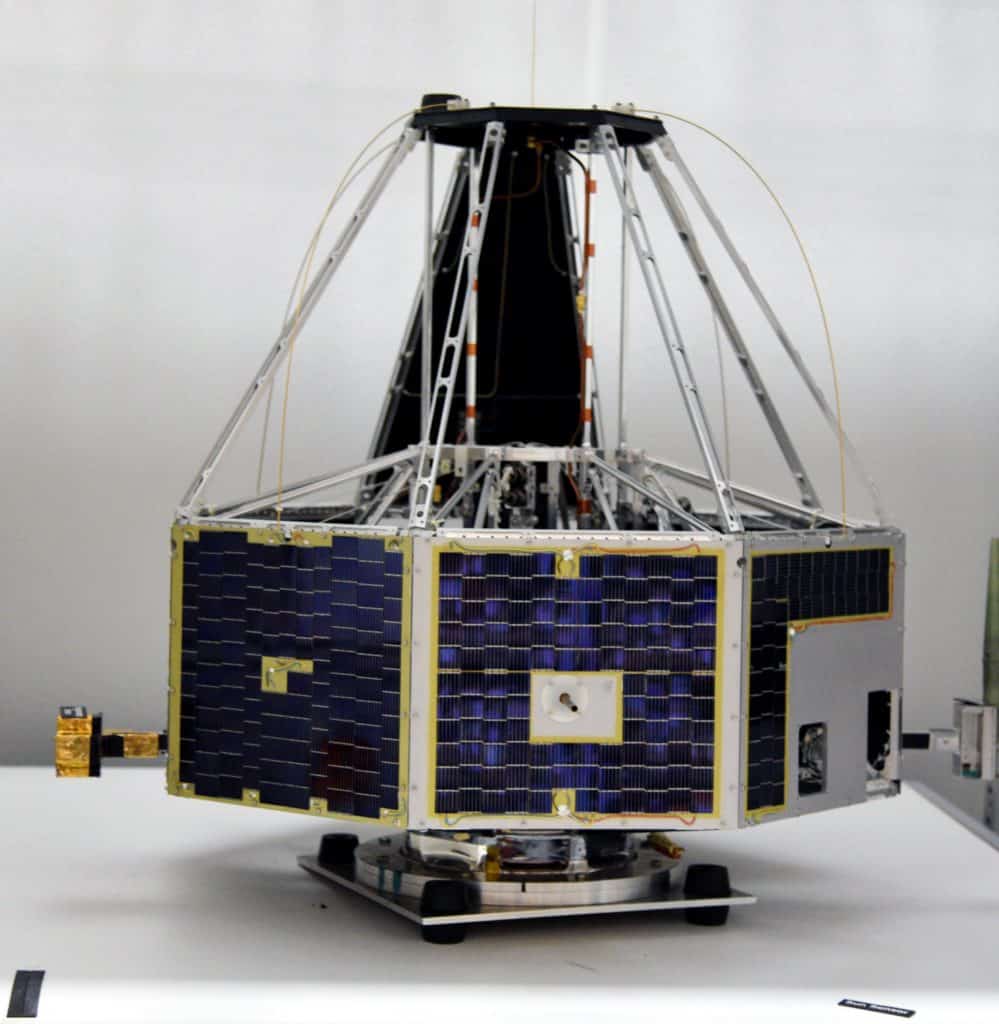
Items from the UI Libraries can end up in the Annex for multiple reasons. Age and the rate of circulation are the most common deciding factors, but some materials also are ill-suited for the bookstacks due to their size or shape; others require the particular atmospheric conditions of the facility. Materials in the Annex are organized by size rather than the classification numbers used in the stacks. A separate room for cold storage contains dozens of delicate film reels, kept at an optimal chill by an HVAC system with air conditioner and dehumidifier units.
Library Annex Coordinator Maggie Halterman-Dess and Library Annex Assistant Madde Hoberg had no trouble identifying their favorite item stored at the Annex: an instrument called a plasma detection package. It’s a few feet tall, covered in solar panels, and has been to space twice. It was transferred from the Department of Physics and Astronomy in 2013, becoming part of the Space Exploration Artifacts Collection in the UI Libraries’ Special Collections and Archives. It played a significant role in the history of space exploration, becoming the first object to be picked up and maneuvered by the remote manipulator arm of a shuttle.
Though the Annex is a repository of physical items, it has played a key role in the modernization of the UI Libraries. One beneficiary has been the Pomerantz Business Library, which is located in the BizHub at the Tippie College of Business. It’s been able to keep pace with a changing industry landscape by moving the contents of its former stacks to the Annex. Students and faculty can still request any book from the collection or the UI Libraries as a whole, but their physical space on campus has been transformed. In place of bookstacks, the BizHub is now able to host collaborative workspaces, a tutoring center, Bloomberg terminals, and a café.
“The UI Libraries Annex is an important resource for the preservation of materials,” says Jack B. King University Librarian John Culshaw. “It not only allows us to be discerning about which items remain in the on-campus bookstacks, but it also opens up possibilities for the use of space, which is always a consideration for us.”
One of the most promising—and daunting—projects for libraries worldwide is the digitization of vast collections. A team from the UI Libraries has been working alongside the Big Ten Academic Alliance and other peer institutions to send collections for digitization in partnership with Google Books.
The Annex plays a crucial role in this partnership, storing the physical copies of books from the UI Libraries after they have been digitized. This allows libraries to design spaces that keep up with technological progress. It also simplifies the discovery of electronic copies, many of which are instantly accessible to borrowers. The Google Books Project also serves a larger goal: the creation of a more connected and collaborative library landscape.
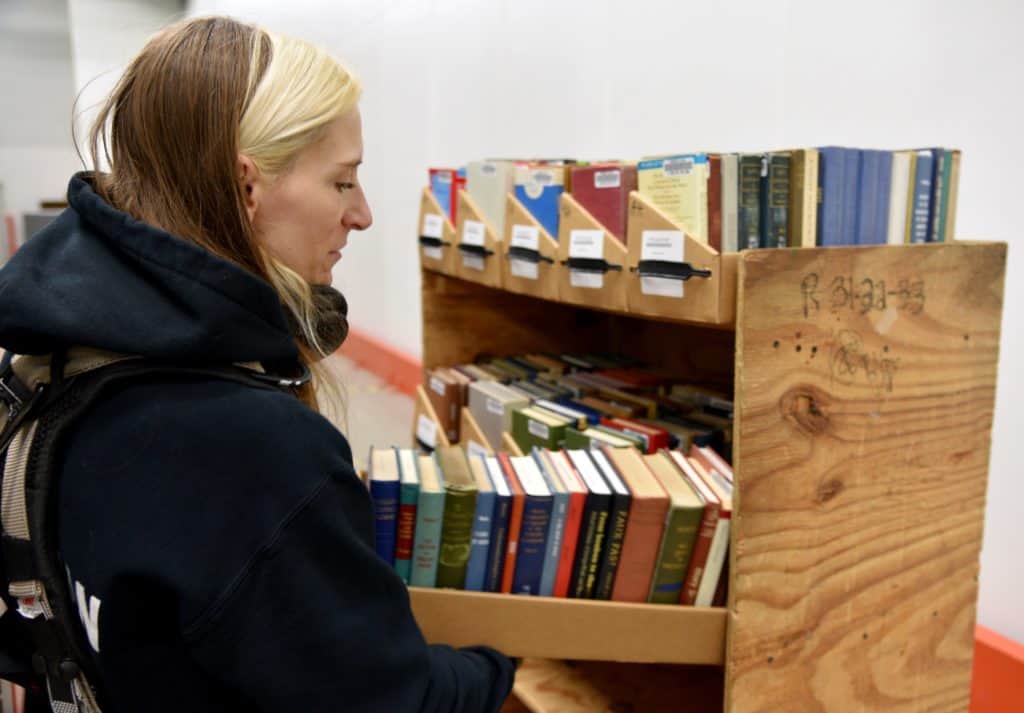
“As library collections include more born-digital content, there is less need to have immediate access to material on campus,” says Halterman-Dess. “The Annex fits into a larger library ecosystem of distributed storage and retention agreements, ensuring that items are committed for safekeeping and fast fulfillment of patron needs on a more regional basis, rather than every library needing to attempt to collect everything.”
The current Annex first opened in 2016, replacing a temporary storage space first used in a significant stacks-reorganization project necessitated by the flood of 2008. This first iteration was a standard-issue warehouse, effective as a stopgap measure but lacking the intentionality of its successor. Still, UI Libraries staff found that the first Annex met a need that persisted even under ordinary circumstances. One of the Annex’s primary benefits was that it created space for books that hadn’t circulated in years but still had something to offer.
Today’s UI Libraries Annex is a cavernous space with a controlled climate: always 65 degrees Fahrenheit, always 50% humidity. Workers step in from the summer heat and don sweaters. They navigate the aisles in a cherry picker, a piece of industrial equipment that requires operators to wear a full-body harness in case of falls. Full-time staff need training in the operation of heavy machinery. It’s a unique professional environment, and each day’s to-do list requires some improvisation.
“Flexibility is a big must for work at the Annex,” says Hoberg. “We often have to make do with what we have, come up with new shelving solutions for unique materials, and so on. It’s definitely not your ‘typical’ library job.”
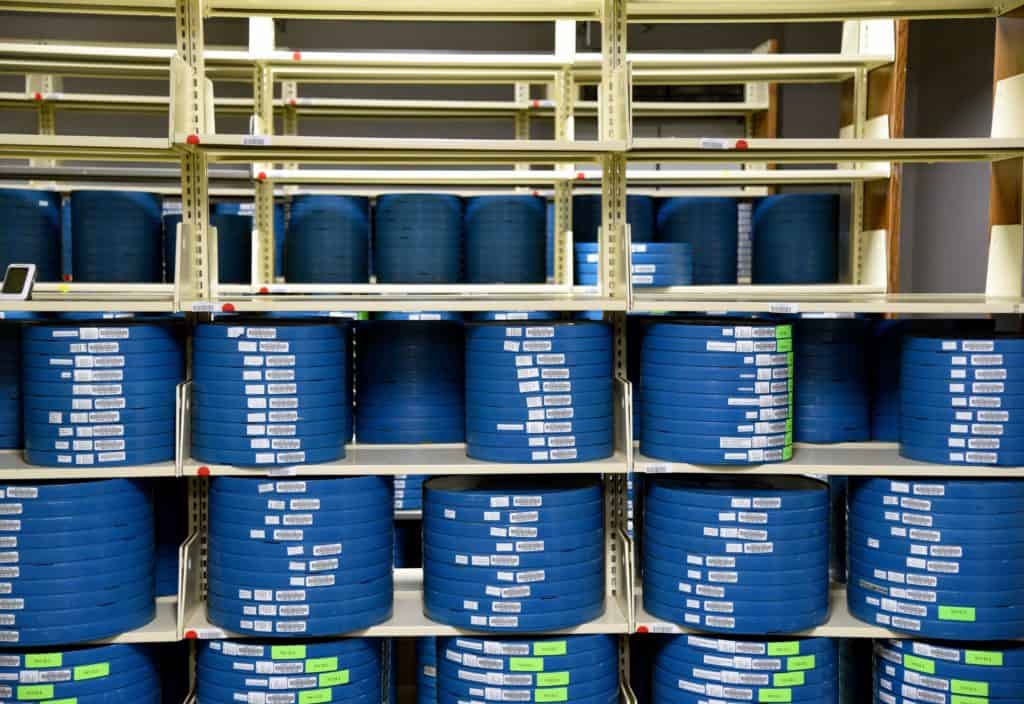
Though faculty members and researchers sometimes ask to visit the facility in person, scans are also available. Halterman-Dess and Hoberg take pride in their ability to hunt down esoteric knowledge upon request. They work directly with borrowers to discern what kind of information they’re seeking in order to target the right materials, which they then scan and share electronically. The UI Libraries Annex team is able to provide these high-quality scans within a “pretty rapid” time frame, according to Halterman-Dess.
“There might be an assumption that if it’s not on-shelf at one of the campus libraries, there will be a lot of hassle from the user’s point of view to put in a request and receive it, but it’s really pretty slick,” says Halterman-Dess.
Physical items take longer to receive because they must be checked out and delivered, but this process, too, has been streamlined. Before the pandemic, the Annex restricted the delivery of items to campus addresses or locations farther than 25 miles from Iowa City. In 2020, the pandemic called for a reevaluation of that policy. The delivery radius was extended to include Iowa City and surrounding communities, regardless of proximity to the UI campus, allowing borrowers to receive materials at home. This option remains in effect. Items belonging to Special Collections and Archives and vinyl records from the Rita Benton Music Library can also be requested through the Aeon system, though they can’t be checked out.
“I think the scale of what we do out here surprises people. Even after the day-to-day tasks are done, we’re never without stuff to do.”
Madde Hoberg
The UI Libraries Annex is a vital resource, and its collection has room to grow. Other Iowa institutions have taken notice. Negotiations are in the works to collaborate with Iowa State University and the University of Northern Iowa, making materials from the Annex available for borrowers from any of the three institutions.
So much of the work that goes into maintaining an efficient library system is accomplished quietly, behind the scenes—and in this case, at an off-site location. Halterman-Dess and Hoberg happened upon this area of librarianship by coincidence, but they both expressed gratitude for the paths their careers have taken. Hoberg describes it as “satisfying and meaningful” work. Halterman-Dess agrees.
“As I often say, I’m pretty sure nobody plans to go into library storage work. There’s almost certainly no coursework that’s tailored directly to it,” says Halterman-Dess. But, she added, that’s part of what makes it so rewarding. “It’s very fulfilling to be able to work with so many other Libraries staff across the many departments and branches. I feel like we really manage to harness our efforts and synergize very well.”
